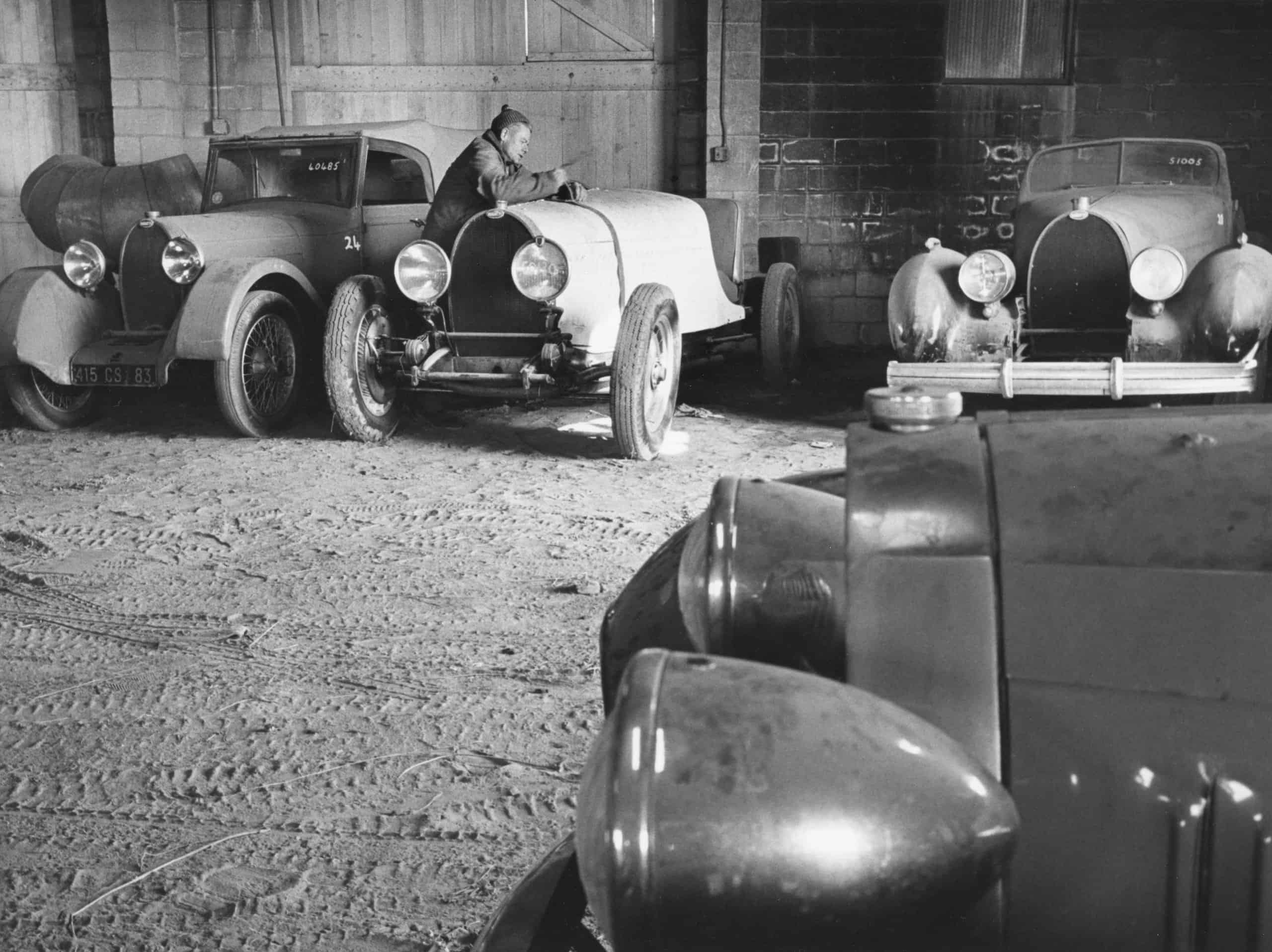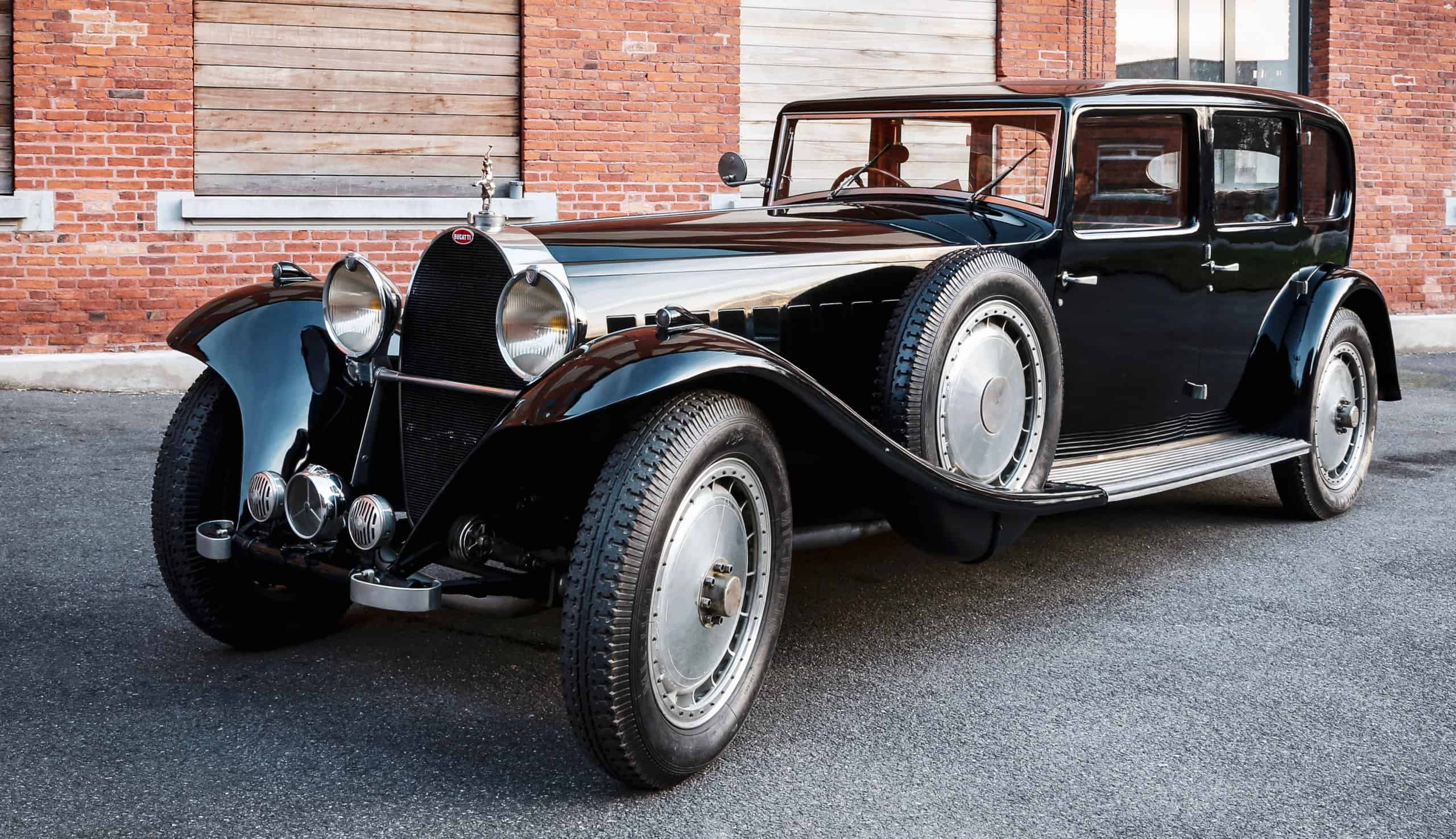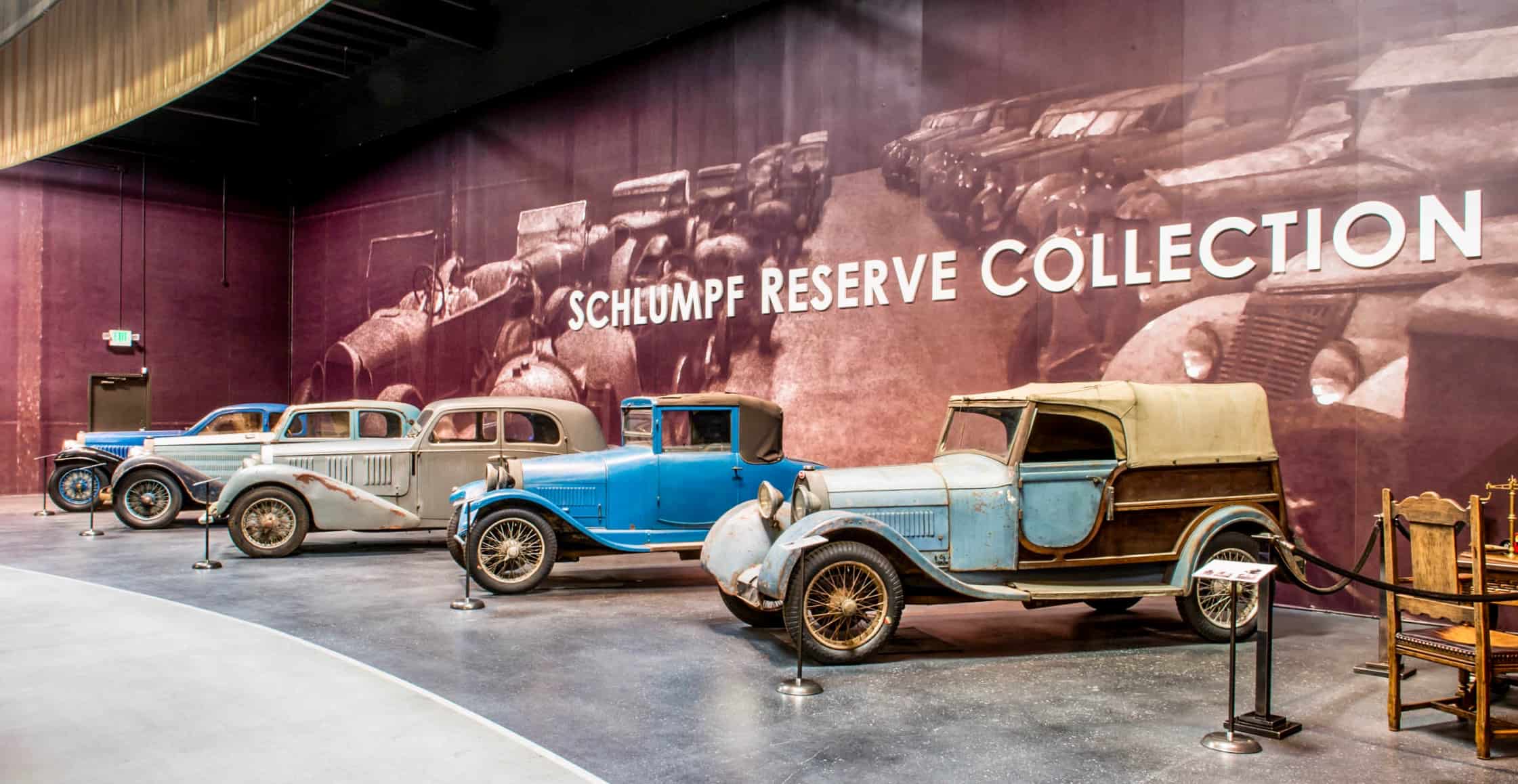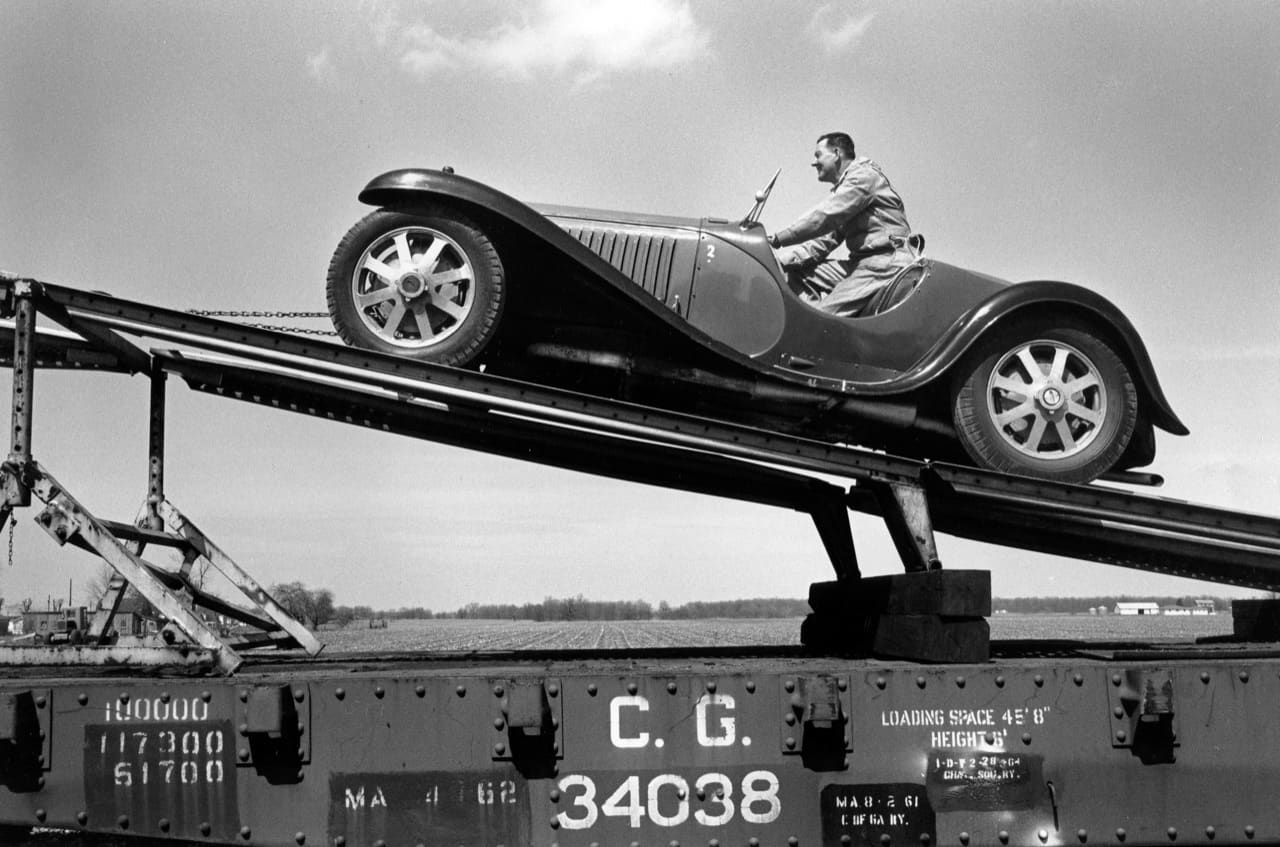Fritz Schlumpf was just 22 years old when he bought his first Bugatti. That was in 1928, and he drove the car on weekends and in races.
Schlumpf was working as a wool broker and in 1935 he and his older brother, Hans, founded their own wool trading company, Société Anonyme pour l’Industrie Lainière. When World War II ended, the brothers were in a position to purchase several mills and factories in the Alsace region and soon were able to dominate the textile industry in eastern France.
In 1957, the brothers acquired an old wool factory in Mulhouse with a goal of using it to house an automobile museum dedicated to Ettore Bugatti and the cars he created, and that Fritz had been busy collecting.


In a recent news release about how the museum came to be, Bugatti distributed a news release noting that in building his collection, “Schlumpf wrote to Bugatti owners all over the world in the early 1960s. He obtained the addresses from a register kept by Hugh Conway of the British Bugatti Owners Club, who put him in touch with American collector John W. Shakespeare from Hoffman, Illinois, USA in 1962.”
And this is where fishing enters the story. Shakespeare was the son of William Shakespeare Jr., who was not a British playwright but a Michigan angler who thought there must be a better way to build a fishing reel, so he invented one and established a successful company that produced fishing rods and reels, fishing line and other products.
John W. Shakespeare collected Bugattis, to the point of having the largest collection in the world, some 30 vehicles, including Ettore Bugatti’s personal electric car, a 1931 Type 56.

“Schlumpf simply had to get hold of these cars and made Shakespeare a lump-sum offer of USD 70,000,” the Bugatti news release noted.
However, Shakespeare, who had moved to Illinois in the early 1950s when he invested in an oil company during a second wave of the Salem Field boom, demanded at least $105,000 for his cars.
In 1963, Schlumpf hired Bugatti specialist Bob Shaw to examine Shakespeare’s collection.
“Most of the cars are kept in a part of the building with a dirty floor, broken windows, leaking roof and nesting birds,” Shaw reported. “Every car is in some state of disrepair and none of them have been running for at least 18 months.”
Despite Shaw’s assessment, Schlumpf upped his offer to $80,000.
“After tough negotiations, mutual threats and blackmail, Schlumpf and Shakespeare finally agreed on a purchase price of $85,000,” or around $725,000 in current currency, Bugatti reports.
“From today’s point of view, it was more than just a good deal — in fact it was a real bargain.”
And especially so since Shakespeare agreed to deliver the cars to France.

Thus, in late March 1964, Shakespeare’s 30 Bugattis were loaded onto a Southern Railway train headed to New Orleans, where they would be put onto a Dutch cargo ship bound for Le Havre, France.
All of this, however, was done in secret, and it wasn’t until 1965 that the Schlumpf brothers announced the purchase and their plans to open a museum.
The best-laid plans…
“The Schlumpf brothers had little opportunity to enjoy their unique car collection, and their pleasure in these wonderful cars was only to last a few years,” Bugatti reports. “Large-scale strikes occurred after they engaged in questionable business practices, and the decline of the French textile industry in the 1970s eventually meant they were forced to flee to Switzerland.”
In fact, it wasn’t until 1977 that “amazed workers” discovered the brothers’ hoard of Bugattis.

“What remains are the exclusive vehicles, showcased in an extraordinary and unique exhibition: the Schlumpf collection is now located in the “Cité de l’Automobile” national museum in Mulhouse in the heart of Alsace – the largest automobile exhibition in the world,” Bugatti notes.
“Covering an area of more than 25,000 square meters, the exhibition comprises 400 of the world’s rarest, most magnificent and most valuable cars – including around 100 Bugatti models, such as two of just six Type 41 Royales ever built. One of them is the former Shakespeare vehicle with the Park Ward bodywork.”
The Bugatti news release notes that you don’t have to go to France to see some of the Shakespeare cars. A few are at the Mullin Automotive Museum in Oxnard, California, still in their original and unrestored condition, as part of a special Schlumpf exhibit.
Postscript: John Shakespeare’s body was discovered in the basement of his home in 1975. He had been gagged and bound with electric cord and handcuffed to a drain pipe and had been shot in the head. The murder reportedly has never been solved. Shakespeare was 69 years old when he died.
Indy museum launches a blog
The Indianapolis Motor Speedway Museum is launching a blog and is looking for help to give its blog a name.
“We could just call it ‘The Blog,’ but we think there’s a much more creative, fitting name out there and we want you to help us find it,” according to Jamie Simek, the museum’s grant writer.
If you want to submit a name for the museum’s blog, you can do so through the comments section of its Facebook announcement.
In the meantime, you can read a blog post by Nelson Cabera, one of the museum’s restoration technicians.
AACA Museum continues its video tour series
The AACA Museum in Hershey, Pennsylvania, continues its video tour series and if you watch this episode, but sure to notice the lettering on the Ford dealership sign.
Ferrari Museums launch podcast series

The Ferrari Museums offer a series of podcasts during the global pandemic lockdown. The podcasts focus on the company’s history and are available for audio streaming in English on Spotify.
“The Origins of a Legend” includes 7 episodes, exploring the company’s history beginning in 1947 with Ferrari’s first victory as Franco Cortese wins the Rome Grand Prix at the wheel of the 125 S.








Hi went to schlumpf in Strasbourg in 1977 it was just awesome